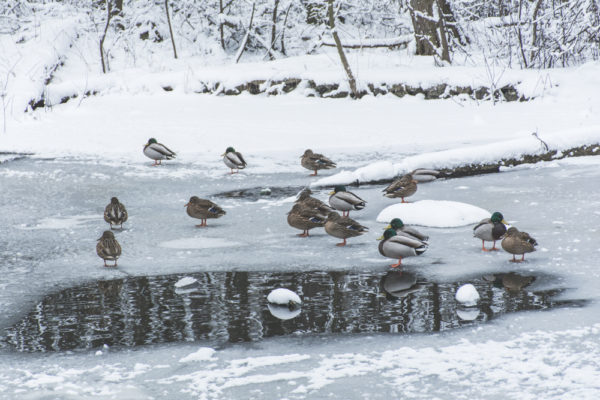Winter is on its way, and that affects a couple of the things you have going on outside. Winter preparations must begin, and your pond pump is something to consider.
In most instances, it is faster to remove a pond pump before temperatures drop. Removing a pond pump for winter is dependent upon your climate and your aquatic life. Temperature below 32 degrees Fahrenheit will cause the water, the pump, and the fish to freeze.
Determining what to do may take some extra thought. Is it warm enough where you live to leave the fish in the fountain? Do you need a water heater? Will the pump work throughout the winter? Is there a “breathing hole” in the ice? Or should you drain your pond?
When to Turn Off the Pump
Turning off the water pump in the winter can be helpful in a variety of ways, first of all it gives you a winter free of much maintenance. If you have fish, it would require you to move them to a more suitable location. If fish are not in the picture, then you can either leave the water there to freeze or empty it out and leave nothing to worry about.
If you do decide to leave the water in the water feature, ice is likely to form and even freeze over. There are a variety of effects that come from frozen water.
When water freezes it expands which can cause cracks or other forms of breaking in concrete or other materials. Whether or not your water will freeze will depend on your location, and so you should look into winter temperatures of where you live and determine if leaving the water is a good option for you.
If you turn the pump off, REMOVE it from the water feature and keep it in a dry secure place. Make sure that it itself is also dry so that no internal water can freeze and cause damage.
Considerations with Pump On
If you leave the water pump on you need to look into a water heater or de-icier. If your climate gets cold enough to freeze at night, and you leave you pump on, it will also freeze and be worthless. Getting a heater if it gets too cold will allow the water to still circulate and not freeze the fish or the pump.
Leaving on the water pump will help the water stay a few degrees warmer, and it will be less likely to freeze because the water is circulating. Before deciding, it might be helpful to look at the owners manual of your pump as some are not designed to work in freezing conditions. If you do end up leaving the pump on, there are a variety of things you will need to consider including the following:
- Dams of Ice: If ice builds ups and sends water out of your pond, then your water level can recede without you even knowing it. A pump without enough water can be a problem and will lead to damage. Always ensure that your pump is completely submerged in water to prevent damage.
- Energy Bills: Running a pump and a de-icier or heater can quickly rack up an energy bill you didn’t know you were getting yourself into. This can be solved by getting an aeration kits, which costs much less to run.
- Oxygen: If you have fish in your pond, they will need oxygen. Without a constantly functioning pump they may not have enough oxygen to survive, and will get stressed to the point of disease or death. Be sure the pump is on enough throughout the day to add oxygen to the water, or get an aeration kit to ensure the oxygen is always keeping your fish happy.
- Ice Holes: To keep fish alive and to keep toxin levels from getting to high in the water, there must always be a breathing hole in the ice. This can be accomplished with a water heater, small or large, that provides at least a small hole where those toxins can escape and not poison your fish.
How to Winterize a Water Feature & Other Tips
When the chilly air starts to seep through the edges of your home, you know that winter is right around the corner. This means that all the water features need a little extra work to prepare for the winter.
We’ve talked about the options of taking out or leaving in your water pump, which are important things to consider, but here we will talk about the other things you may need to know as you get your pond ready for winter.
- Remove Plants and other organic material. Leaving these in the water to rot and freeze over the winter will release toxic chemicals into your water that could change the balance and potentially hurt fish or new growth the next year. Don’t only remove the living plants though, but also any plant debris in the bottom of your pond.
- In accordance with the problem mentioned above, you can also add Cold Water Beneficial Bacteria which will help to keep the pond clean and fresh and prolong its cleanliness throughout the winter. It takes care of fish waste and plant debris. Overall, it helps the water balance of your pond.
- Another odd tip is if you leave fish in your pond over the winter, do not feed them. Fish naturally go through a more dormant cycle of living and if they eat to much there bodies will not be able to process and it and it could kill them.
- Make sure there is always a hole in your ice. This hole allows toxins to be released. This can be accomplished with a good de-icier. Get one that is reliable and one that you can trust. Also be sure not to bang on the ice in order to create a whole as the sound waves can be harmful to fish.

